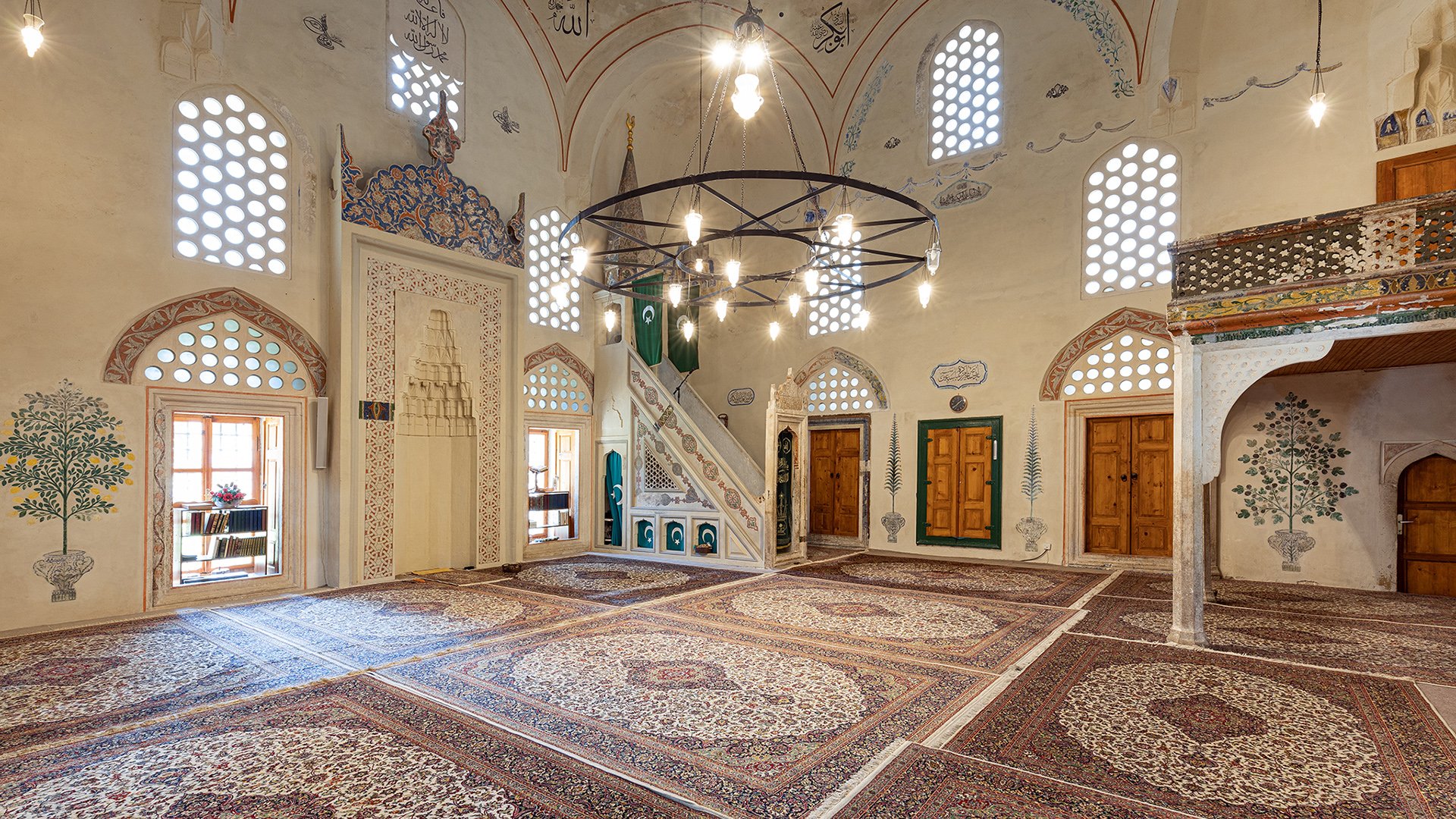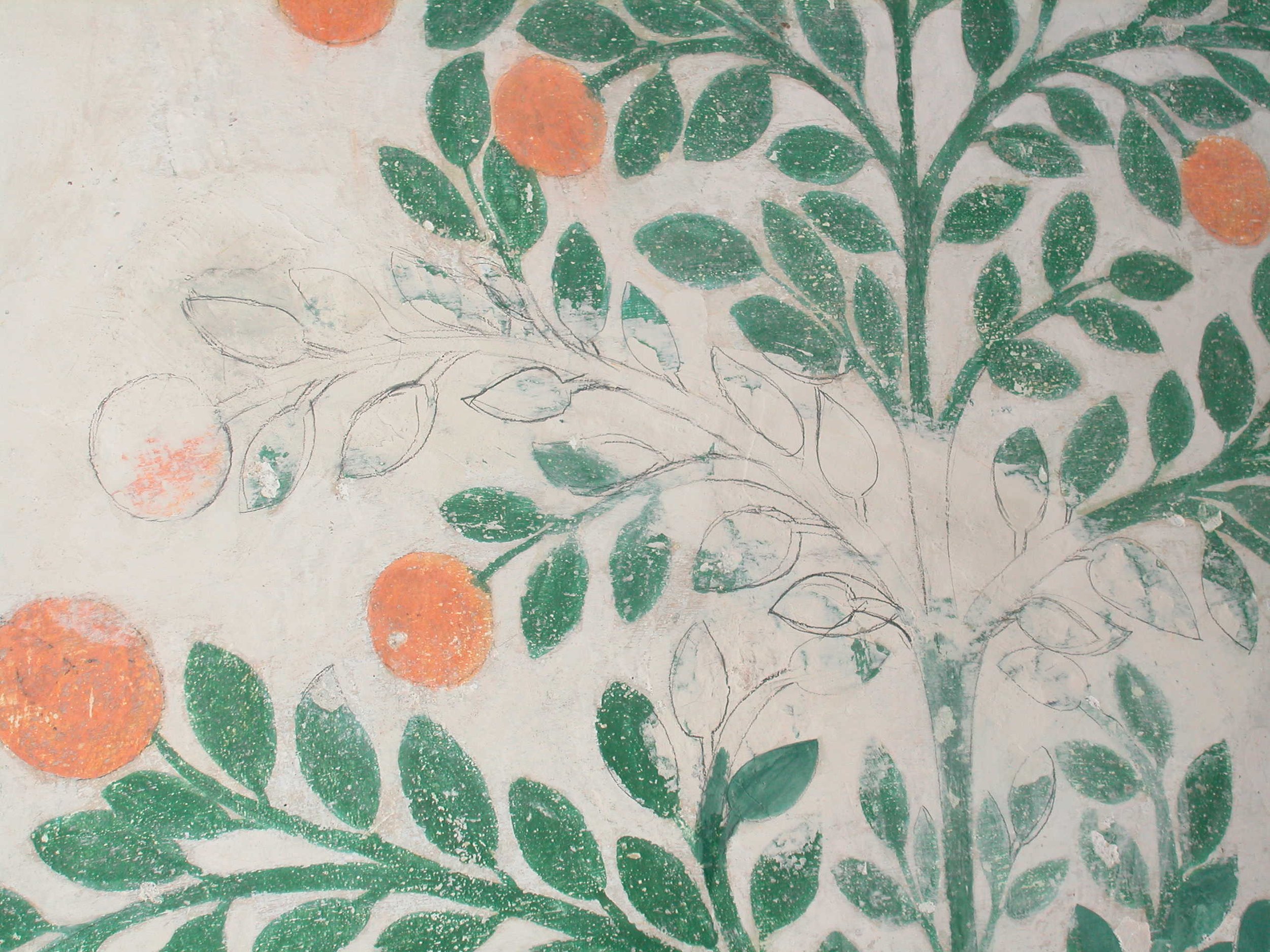
KARAĐOZ BEG MOSQUE FROM XVI CENTURY IN MOSTAR
Author: Prof. Aida Idrizbegović Zgonić, PhD, Faculty of Architecture of University of Sarajevo • Photo & video: Mirza Hasanefendić
During the reign of Sultan Sulejman I The Magnificent, Rustem-Paša was his Grand Vizier and his brother Zaim Muhamed-beg. Zaim Muhamed-bey Karađoz commissioned the Karađoz-bey Mosque in 1557 and left behind a significant waqf. They endowed the building – Karađoz-beg Mosque built in 1557, as only mosque in Bosnia and Herzegovina connected to Mimar Sinan in three lists of his works[1]. The classical style of the mosque is visible in its geometry and proportions - a perfect square (10.30 m x 10.30 m) and semicircle dome with straightforward lines of symmetry. The height of the dome is 16.00 meters and is 50 cm thick made out of travertine stone. The minaret is 35 meters tall (with alem /pinnacle) entirely made out of tenelija stone.
During an extensive restoration project from 2002 to 2004, several items were of particular interest. First was a major structural intervention in dismantling the remains of the minaret due to its instability and the need to repair a large portion of stone wall. The individual stones were placed and marked within the graveyard and courtyard of the mosque and became a tourist attraction on their own.
Second was the restoration of the interior paintings,based on previous work[2] especially the greenery and orchards that are characteristic for Mostar region and in Karađoz-beg mosque they are made with sophistication. Together with artists a decision was made to restore what was visible of the original high-quality drawings from the 16th and 17th century. There were some later drawings made by amateur painters probably in 19th century that were left as they were found (such as vases for trees and collonade) for future generations to witness all layers. “Between each of the windows in this zone a large tree was painted, cypress, orange, date palm, weeping willow, plum, pear, fig and lemon. Each of the trees grows from a beautifully shaped vase with two handles, also decorated with plant motifs. The trees were in dark green and the leaves in pale green, occasionally highlighted in dark blue. The fruit were shown disproportionately large – the oranges in orange, the plums in dark blue, the pears in ochre, the figs in black, the lemons in yellow “[3]
One particular inscription has gained a lot of interest translated “One hour of Justice is worth seventy years of prayer”[4]. This is not precisely dated, but a message is universal and relevant ever after.
[1] The mosque is cited In three lists of Mimar Sinan works: Tezklret ul-Bunuyan, No 1-72. Tezklret ul-Ebnlye No 1-75. and Tuhfet ul- Mlmartn No I-52; Source: Pasic. A: “Islamic Architecture in Bosnia and Herzegovina” STUDIES ON THE HISTORYAND CULTURE OF BOSNIA AND HERCEGOVINA, NO.2 PC/94- ISBN 92-9063-050-7, Istanbul,1994. Organization of the Islamic Conference (OIC) Research Centre for Islamic History, Art, and Culture (IRCICA)Footnote 45, page 67.
[2] Bahtijarević, N, “Istraživački radovi na zidnom slikarstvu Karađoz-begove džamije u Mostaru”, Hercegovina 11-12. Mostar, 2000.
[3] Andrejević Andrej, ”Islamska monumentalna umjetnost XVI veka u Jugoslaviji”, Beograd 1984.
[4] Eren, H, Pašić, A, Idrizbegović Zgonić, A „ Restoration of Mosques in Bosnia and Herzegovina, IRCICA 2013, p. 78.
Restauration photos: Archive
































